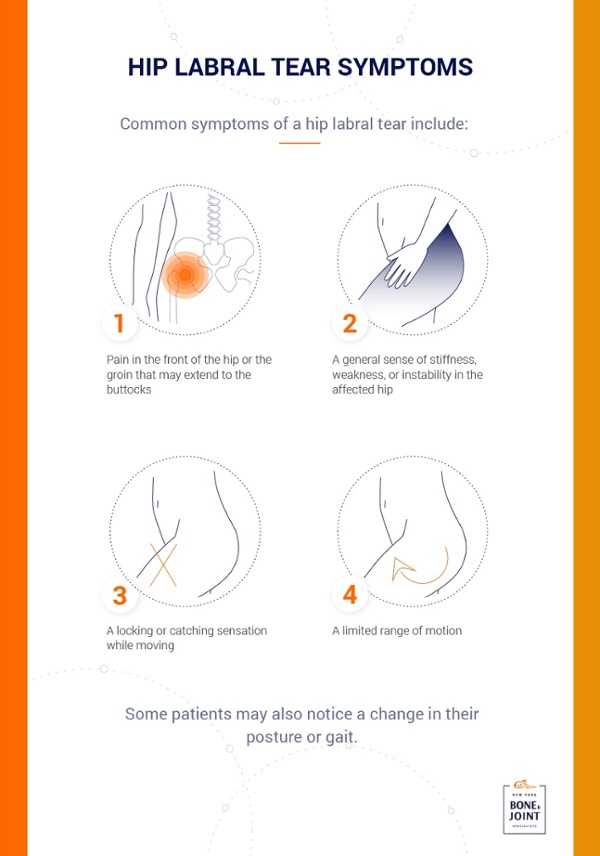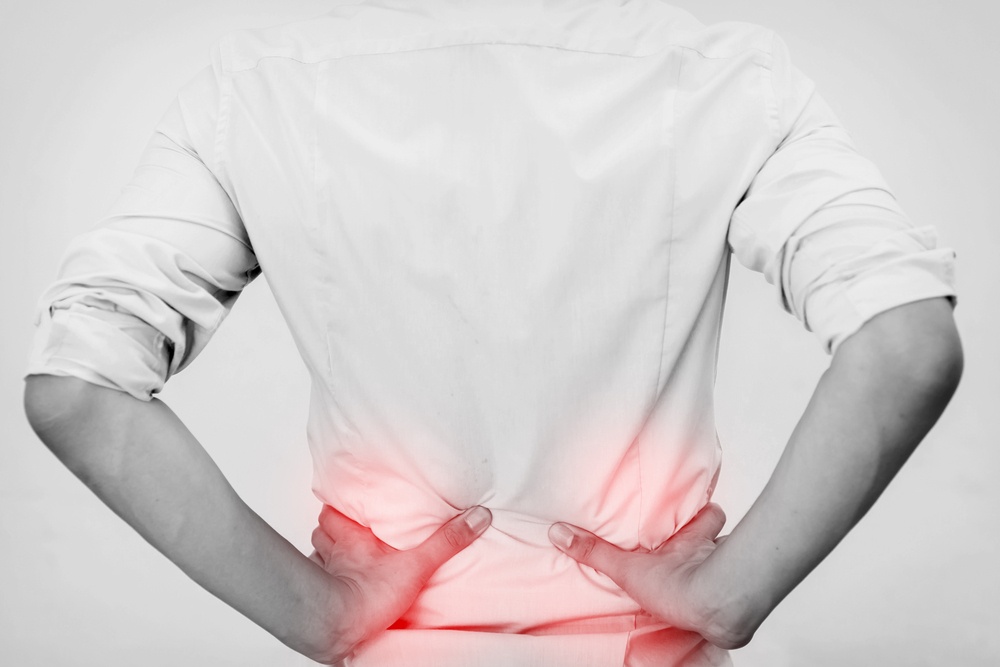Hip labral tears occur when the acetabular labrum — the cartilage surrounding the socket of the hip joint — is frayed or ruptured. They can stem from a number of causes, but they’re most often a product of hip impingement: a pinching of the labrum caused by friction between the head of the femur and the socket of the hip. In other cases, they’re the result of sudden trauma, overuse, or underlying orthopedic conditions such as hip dysplasia.
Because there are numerous potential causes of a hip labral tear, symptoms can vary widely from patient to patient. Indeed, many patients may not initially realize that they’ve suffered a tear, preventing them from finding appropriate treatment for their condition. Since early diagnosis and treatment are essential to a successful recovery, we created this graphic guide to help you better recognize the signs of a hip labral tear and find treatment as quickly as possible.
WHAT ARE THE SYMPTOMS OF HIP LABRAL TEARS?

Symptoms of hip labral tears largely depend on the severity of the injury, but most cases are accompanied by a few telltale indications. Generally, the most prominent symptom is a persistent pain in the front of the affected hip that radiates to the groin and buttocks. This pain may be accompanied by a locking or catching sensation that arises when walking and worsens with continued use. Other common symptoms include a general stiffness or weakness in the hip, a sense of instability, and a limited range of motion. Some patients may also experience changes to their posture or gait, as well.
HOW ARE THEY TREATED?
Treatments for hip labral tears vary from patient to patient. Since many hip labral tears are caused by hip impingement, resolving this underlying cause is essential to a full recovery. In other cases, patients will largely recover after several weeks of rest and rehabilitation.
Hip labral tears caused by hip impingement are usually treated with some simple conservative methods such as physical therapy and anti-inflammatory medications. These non-invasive treatments can provide lasting relief from pain and help patients resume normal activities within a short timeframe.
In more severe cases, hip labral tears may need to be treated with minimally invasive arthroscopic surgery. During the procedure, your surgeon will make some small incisions into the skin surrounding the hip and operate on the labrum with a set of small instruments. Your surgeon will then mend any tears in the cartilage, reattach it to the bone, and, if necessary, reshape or resurface the hip to prevent future impingements. Complete recovery should come after eight to twelve weeks of rest and physical therapy.
If you think you may be suffering from a hip labral tear, you should see an orthopedic specialist as soon as possible to receive a formal diagnosis and pursue an appropriate course of treatment. Here at New York Bone and Joint, our team of orthopedic specialists has decades of combined experience in surgical and non-surgical treatments of hip labral tears and impingements, and we’re ready to help you at every stage of rehabilitation. Call us today to schedule a consultation!




